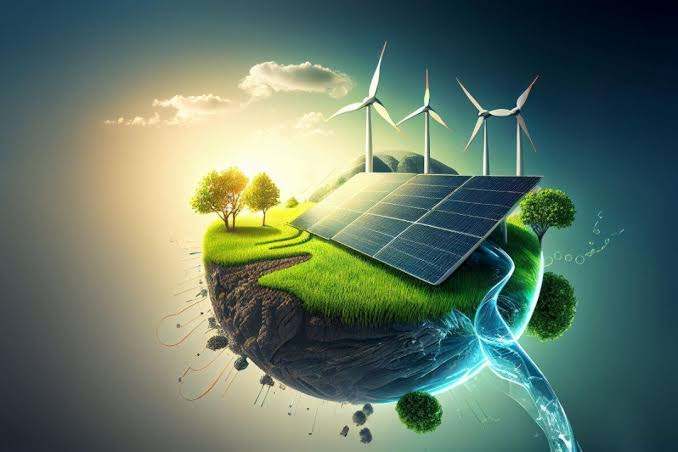The future of our planet lies in the hands of the next generation. Equipping younger minds with knowledge about renewable innovations is critical for fostering a sustainable, energy-efficient world. But how do we teach kids and young adults about topics like wind energy, solar panels, and sustainable technology in a way that keeps them engaged?
This blog explores actionable tips for introducing renewable energy concepts, highlights inspiring success stories, and shares how renewable technology – like solar panels in Utah and beyond – can become a relatable and exciting topic for all.
Why Teaching About Renewable Innovations Matters
Building Awareness for a Sustainable Future
Introducing renewable innovations at a young age plants seeds of awareness and responsibility. Concepts like climate change, the carbon footprint, and the importance of renewable energy can shape their future decisions as consumers, policymakers, or engineers.
For example, understanding how solar panels work not only teaches them about clean energy but inspires curiosity about other eco-friendly solutions.
Closing the Renewable Energy Gap
The renewable energy sector is growing rapidly, but there’s still a workforce gap. According to the International Renewable Energy Agency (IRENA), the industry will create millions of new jobs by 2030. Educating the next generation ensures that more individuals are well-prepared to fill these roles, whether as engineers, technicians, or innovators.
Making Renewable Energy Relatable
Leveraging Everyday Examples
One of the best ways to teach about renewable innovations is by relating them to everyday life. For example, explaining how solar panels power homes or businesses makes it easier to connect the concept of sustainable energy to something tangible.
Use visual aids such as interactive models of wind turbines, diagrams of the solar energy process, or even field trips to places like solar farms (Utah, for instance, is a key hub for solar panel technology development). Seeing renewable energy in action can be much more impactful than just reading about it.
Utilizing Hands-On Activities
Experimentation is key, especially for younger learners. Conduct fun, hands-on activities that mimic renewable energy principles. Some ideas include:
- Building simple solar ovens using a pizza box, foil, and sunlight.
- Creating small wind turbines from craft supplies and watching how they generate energy.
- Organizing sustainability challenges like family recycling games.
These activities not only make learning fun but also provide a practical understanding of crucial concepts.
Gamification of Renewable Energy Education
Gamified learning introduces renewable innovation in a way that resonates with tech-savvy young people. Apps and online games allow students to assemble renewable-powered cities or install virtual solar panels on homes. The gamification method transforms complex topics into an enjoyable educational experience.
Highlighting Real-World Success Stories
Stories with Global Impact
Sharing real-world stories about renewable innovations can inspire kids to dream big. For example, take the story of William Kamkwamba, a young inventor from Malawi who built a wind turbine from scraps to power his village. Kamkwamba’s determination reminds young minds that even simple innovations can make a huge difference.
Local Case Studies
Bring it closer to home by highlighting local achievements. For instance, Utah is quickly becoming a leader in renewable energy, with its significant investments in solar panels and other green technology. Sharing success stories of businesses or schools in Utah that save energy through solar panel installation can make the concept more accessible.
This regional relevance encourages kids to view renewable energy as achievable and real rather than something abstract or distant.
Turning Awareness into Action
Encourage Small but Mighty Actions
One effective way to engage the next generation is by encouraging simple, actionable steps. Younger audiences love feeling that they can make a difference. Motivate them to:
- Conserve energy by turning off unused lights.
- Learn about recycling and proper waste segregation.
- Spread awareness about sustainability by creating posters or social media posts with eco-tips.
The key is to make these actions manageable so they can feel a sense of achievement and become inspired to do more over time.
Partnering with Schools and Communities
Working with local schools and community organizations can bring renewable innovations to the forefront of education. Collaborate with science teachers to include renewable energy topics in their curriculum or organize “Eco-Day” events where students can showcase their renewable innovation projects.
Programs like these deepen student understanding and may even spark ideas for innovations of their own.
A Vision for the Future
Imagining a Renewable-Powered World
Ask young people to imagine a world where sustainable energy solutions power every home, school, and city. Encourage them to consider how renewable innovations like solar panels in Utah or offshore wind farms could transform life as we know it. Visualizing that future fosters creativity and inspires innovative ideas to help make it a reality.
Inspiring Leaders and Innovators
Teaching the next generation about renewable innovations isn’t just about educating potential consumers; it’s about cultivating future leaders who will drive the industry forward. By nurturing their interest and intellect, we equip them with the tools to lead, invent, and inspire.
Shaping Tomorrow Through Knowledge
The next generation has immense power to reshape the world using renewable energy. By making concepts accessible, relatable, and inspiring, we can spark their interest in leading sustainable lives and careers that drive meaningful innovation.
